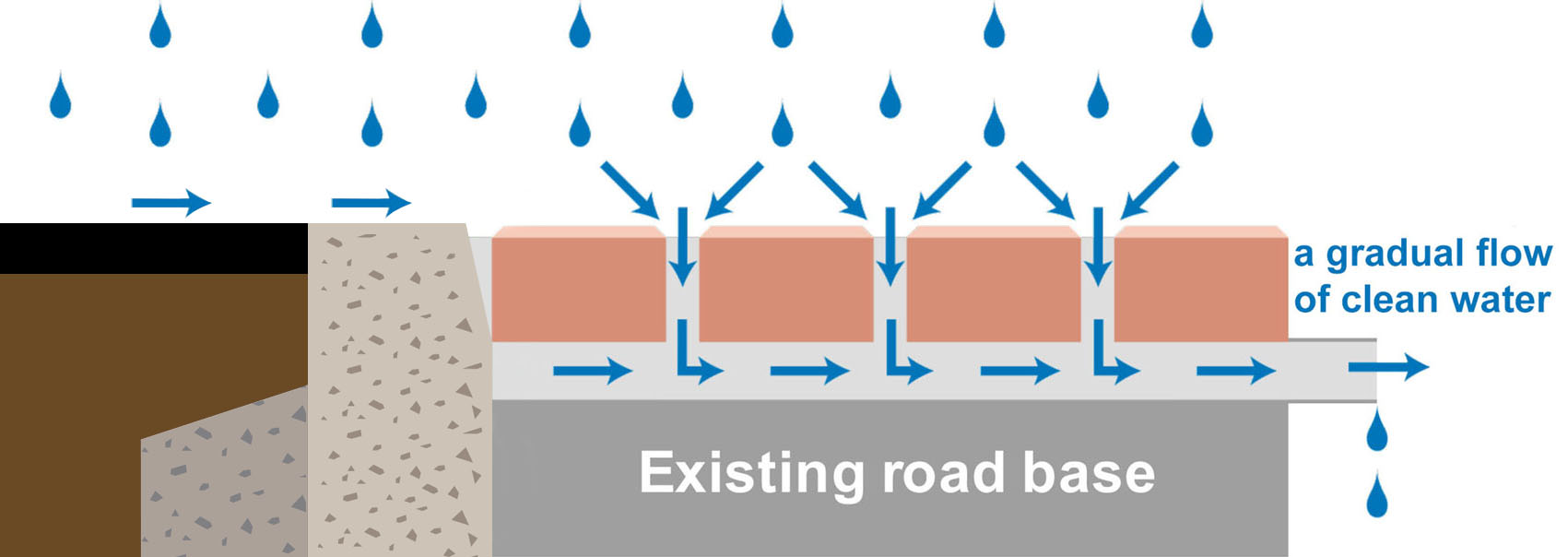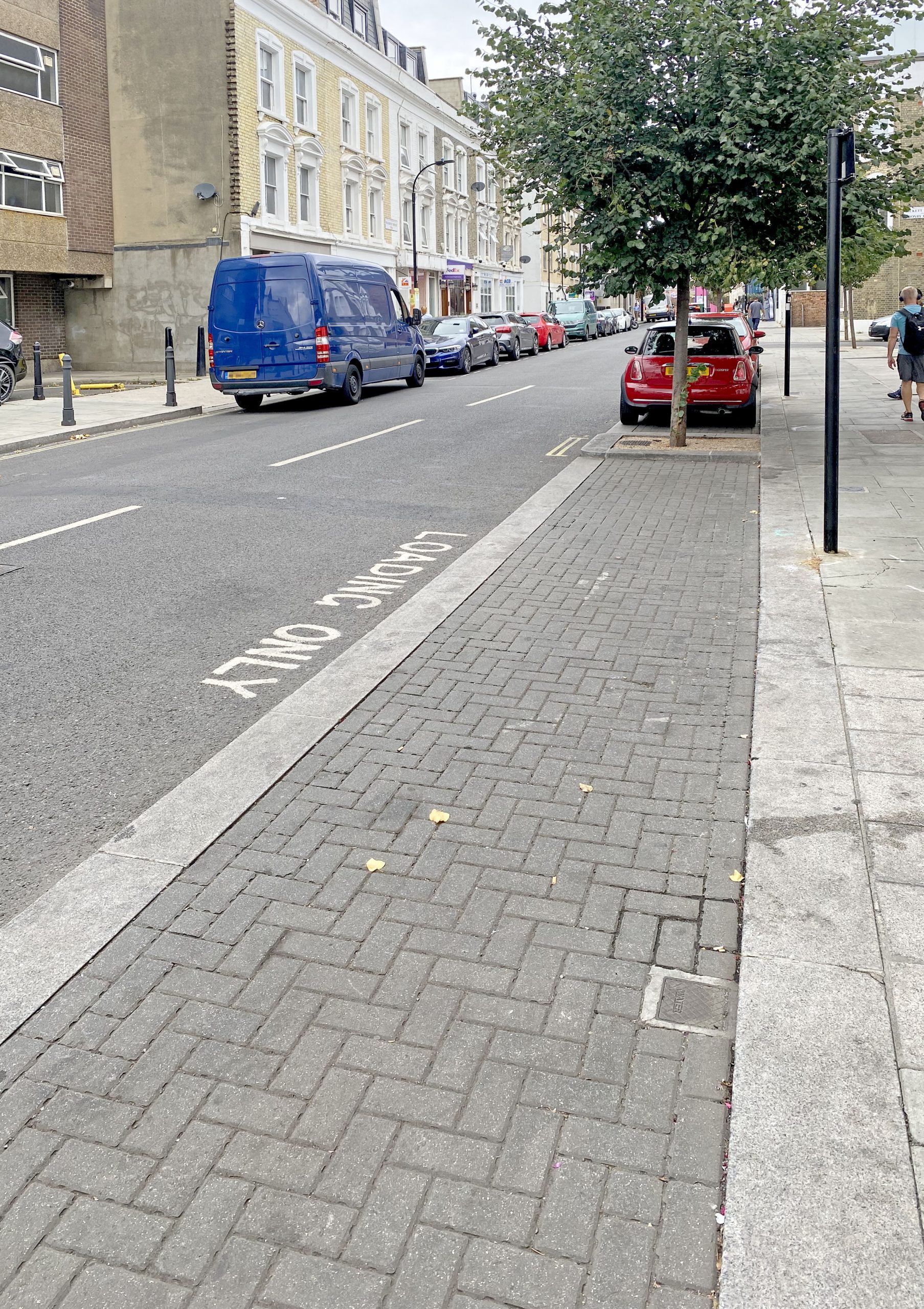Imminent requirements for mandatory sustainable drainage systems (SuDS) on developments herald a much wider application of concrete block permeable paving. But this approach is also needed to renewal of existing impermeable paving, in order to reverse the sealing-up and flooding of our towns and cities.
This issue was highlighted in the November 2022 National Infrastructure Commission report on reducing flooding from surface water. The NIC report highlights that, currently, around 325,000 properties in England are in areas at the highest risk (with more than 60 per cent chance of surface water flooding) in the next 30 years and that, without action, up to 295,000 more properties could also be put at risk.
Apart from new developments, various techniques can transform worn-out paving and deliver SuDS, green infrastructure (notably street trees) and healthy streets. There is a compelling case to apply concrete block permeable paving (CBPP) in place of impermeable surfaces for street paving renewal, as well as regeneration and upgrade projects. In addition to ’new-build’ full profile CBPP, other techniques can be used in existing urban settings enabling low-intervention retrofit installation to provide long-life with minimal maintenance and low whole-of-life cost, minimising excavation and avoiding statutory services.

Innovative Overlays
CBPP overlay is a deceptively simple but innovative approach, maximising re-use of the existing road-base and its embodied carbon. The CBPP surface zone simply replaces planed-off old asphalt or another road surface, applied onto the original structural road base. In many cases, this can simply run kerb-to-kerb to form a shared surface, level with the footway and flush kerb top. This optimises the original drainage regime – but below the surface.
The same blocks and 2/6.3mm grit bedding layer and jointing material as for permeable pavements generally are used. Water is attenuated, treated and conveyed within the laying course, which is key to this technology, enabling filtration of silt and retention/ treatment of pollutants without clogging.

A gradual flow of clean water can then be released near the surface, meeting SuDS requirements and irrigating trees and green infrastructure, for example in rain gardens where water can also be stored, or passing into sewers. The CBPP surface zone overlay collects, cleans and stores up to 20mm of everyday rainfall, representing up to 95% of rainfall events and the ‘first flush’ of silt and pollution from the surface.

Partial Replacement
An alternative approach to introducing SuDS and trees to existing hard surfaces is the partial replacement of existing impermeable paving with CBPP to one or both sides, avoiding statutory services and demarcating on-street parking areas. Here, the existing road profile directs water from the impermeable carriageway and also footways onto the CBPP. Water storage for SuDS and/or sustenance for trees and green infrastructure is achieved with modular geocellular systems or structural soil profiles below the CBPP and/or raingardens.

Trees and Green Infrastructure
CBPP and trees, and other planting, have been proven to work together in synergy. CBPP – whether full-construction or in overlay form – can collect rainfall away from the canopy and convey it to the tree. It can then simply discharge horizontally into a raingarden, perhaps with overflow into an existing gulley. The raingarden stores water during heavy rain for SuDS, retains soil moisture during dry weather and provides additional water quality, as well as irrigation.
Alternatively, CBPP can be used over standard tree pits, proprietary tree planters and ‘Stockholm System’, or other structural soil installations, enabling irrigation and simple gas (oxygen/carbon dioxide) exchange essential to trees – without additional reservoir units or pipes requiring maintenance. CBPP also avoids tree root disruption common with other paved surfaces.
